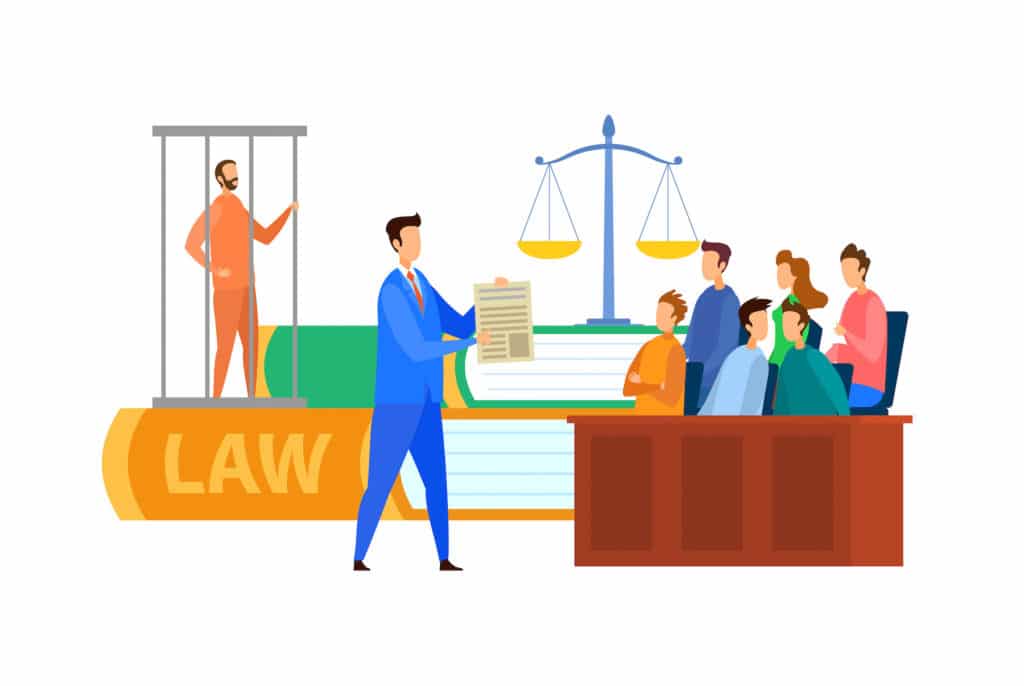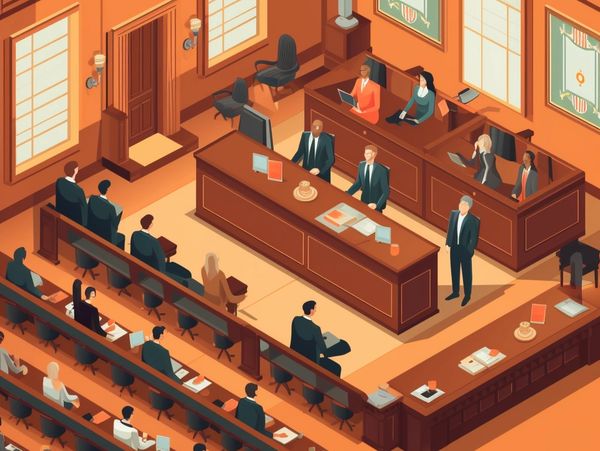Mastering the Art of Trial Presentations: Key Methods for Efficient Legal Arguments
Mastering the Art of Trial Presentations: Key Methods for Efficient Legal Arguments
Blog Article
Browsing the Complexities of Test Presentations: Tips for Seamless Delivery and Engaging Arguments
In the world of legal procedures, the art of trial discussion stands as an essential determinant of success. The complexities fundamental in trial presentations need a fragile equilibrium of skill, strategy, and skill.

Understanding Trial Purposes
To properly navigate a trial, it is important to have a clear understanding of the purposes that require to be attained. Before entering the court room, lawful groups must define their goals and desired results. These goals function as assisting concepts throughout the test, forming methods and affecting decision-making procedures.
Understanding test purposes entails a thorough evaluation of the instance, lawful precedents, and the client's best interests. Trial Presentations. It requires a precise evaluation of the truths, identifying essential issues, and anticipating possible obstacles. By establishing quantifiable and particular goals, attorneys can tailor their debates and discussions to align with the desired outcomes
In addition, a clear grip of trial objectives enables lawful groups to prioritize evidence, witnesses, and lawful disagreements efficiently. It allows for the growth of a systematic narrative that resonates with the discretionary, strengthening the overall instance presentation.

Organizing Evidence Successfully
Having a clear understanding of test objectives lays the foundation for organizing evidence efficiently in legal proceedings - Trial Presentations. By straightening the discussion of proof with the wanted outcomes of the trial, legal groups can reinforce their arguments and enhance their persuasiveness. One vital element of arranging proof is categorization. Organizing proof based on styles or importance to details legal elements can assist streamline the discussion and make complex details extra absorbable for the judge or court.
Another crucial element in arranging evidence efficiently is developing a rational circulation. Presenting proof in a coherent and consecutive fashion can help construct a compelling narrative that sustains the legal debates being made. Furthermore, making use of visual aids such as timelines, charts, or graphes can even more boost the organization of evidence and aid in clarifying complicated partnerships or sequences of events.
Moreover, ensuring that all evidence provided is pertinent and admissible to the situation is necessary. Irrelevant or inadmissible proof can diminish the toughness of the argument and potentially hurt the integrity of the here and now celebration. Therefore, a thorough review and selection process ought to be embarked on to consist of just one of the most legitimately audio and impactful proof in the test discussion.
Crafting Persuasive Narratives
Crafting engaging stories plays a crucial role in presenting persuasive disagreements throughout lawful see this website procedures. A well-crafted narrative has the power to captivate the audience, evoke emotions, and ultimately persuade the decision in favor of the here and now celebration. When building a narrative for a trial presentation, it is necessary to establish a clear story that highlights key points and connects them in a coherent manner. Begin by outlining the facts of the case in an engaging fashion, making certain that the series of events is simple to follow. Introduce personalities properly, giving history details that helps the target market comprehend their activities and inspirations. Additionally, integrating brilliant descriptions and interesting language can bring the narrative to life, making it more memorable for the discretionary. By weaving with each other evidence, testimony, and lawful disagreements into a persuasive and natural story, lawyers can properly promote for their clients and raise the chance of a positive outcome in the court room.
Understanding Visual Aids
Reliable use visual help is vital to enhancing the effect and quality of trial presentations. Visual help, when utilized tactically, have the power to streamline intricate information, strengthen vital points, and leave a long lasting perception on the court and court. To master visual aids in test discussions, it is critical to ensure that they are clear, concise, and appropriate to the disagreements being made.
When including aesthetic help, such as charts, timelines, charts, or pictures, into a trial presentation, it is vital to maintain them aesthetically appealing yet expert. see The visuals need to enhance the spoken debates, giving a graph of the details being discussed without overwhelming the target market with unneeded information.
In addition, experimenting the aesthetic help in advance is imperative to make certain a smooth distribution throughout the trial. Familiarizing oneself with the content, changes, and timings of each aesthetic help can assist preserve the flow of the presentation and protect against technological problems that may occur.
Delivering Impactful Closing Arguments
A compelling closing argument offers as the culmination of a trial presentation, enveloping the core story and convincing the judge and court towards a beneficial decision. To supply an impactful closing debate, it is vital to succinctly wrap up bottom lines, highlight the staminas of your instance, and address any weak points in a calculated way. Begin by outlining the major disagreements that support your customer's position, stressing why the evidence presented throughout the test sustains your story. It is necessary to produce a sense of communication and clarity, leading the judge and court towards the wanted final thought.
Moreover, integrating psychological charm can better reinforce your closing argument. Ultimately, a well-crafted closing argument must leave a long-term impact, engaging the court and court to rule in your customer's support.
Conclusion
In conclusion, mastering trial presentations involves comprehending goals, organizing evidence, crafting narratives, using visual aids, and providing impactful closing disagreements. By executing these techniques efficiently, legal representatives can offer their instance effortlessly and make compelling disagreements in the courtroom. It is important to navigate the complexities of test presentations with accuracy and ability to accomplish success in legal proceedings.
By aligning the discussion of proof with the preferred outcomes of the trial, lawful groups can strengthen their arguments and boost their persuasiveness (Trial Presentations). To understand aesthetic aids in test presentations, it is crucial to this content guarantee that they are clear, concise, and pertinent to the debates being made
A compelling closing argument offers as the conclusion of a trial discussion, encapsulating the core narrative and encouraging the judge and jury in the direction of a positive decision. Begin by detailing the main debates that sustain your customer's setting, emphasizing why the evidence provided throughout the trial supports your story.In conclusion, grasping test presentations entails comprehending goals, organizing evidence, crafting stories, making use of visual help, and supplying impactful closing arguments.
Report this page